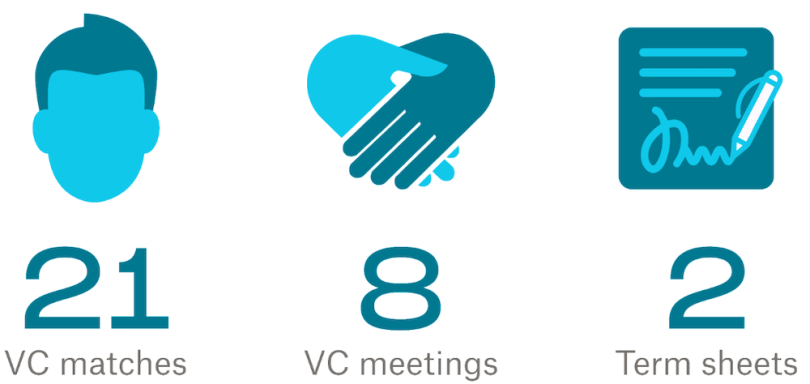When I first started fundraising, I often felt like I was flying blind. Communicating with investors consisted of emailing our pitch deck as a PDF attachment out into the void. My goal was to message an investor, hope that they opened the email and read the deck. Ideally, that would spark interest in a meeting.
In reality, the email often got forwarded to 10 other addresses (five of which often belonged to one of our competitors, I later found out). I had almost no control over the process once my deck was emailed out and even less visibility into its reception. I had no idea if my pitch was resonating with the intended audience and if I was making any progress in finding the right investor.
Fundraising is an opaque process. So, the more transparency we can gain from investors, the more focused and effective we can be in finding the right ones. And more transparency means more equity between VCs and startups as they negotiate.
So, although some people may encourage you to get creative with your pitch deck, precision in delivering a compelling narrative to the right investor is far more important. I found that the following three steps helped me do just that and take my fundraising to the next level:
3 Rules for Founders Who Want to Improve Their Fundraising Efforts
- Align your pitch deck flow and narrative based on investor expectations.
- Analyze data about the effectiveness of your pitch deck.
- Match with the right investor for you.
Align Your Deck With Investor Expectations
Although each company has unique value, founders only have a few minutes to make their best first impressions and prove that their ideas will be a good investment. For example, in the seed round, VCs spend just over three minutes on average reviewing seed stage decks. Such a quick turnaround means that getting the right information, narrative and flow laid out in the way investors expect is critical.
Plenty of great resources out there detail how best to approach your pitch deck, so I’ll just share key takeaways for how to approach three important sections.
- A successful raise starts by answering this question: What does my company ultimately aim to do and why? Ideally, you can accomplish this in one sentence on a single slide. Explain the problem you intend to solve with your business in easy-to-understand language. Don’t get caught up in industry jargon. Clarity is key here.
- Your next slide should focus on the solution. Make sure the solution you offer is also easily understandable and to the point.
- Another critical slide is the “Why Now?” slide. This is your chance to speak to any current market conditions that you feel your company is poised to address in a significant way. This section isn’t applicable for all founders, but if there is a sense of urgency or timeliness to your business, this section can really boost the relevance of your pitch.
After you have piqued the interest of the prospective investor, then you can hit them with the details. In a successful deck, the slides on your product and business model will get the most scrutiny — on average, close to a minute for each section. So, although earlier sections should communicate your message in just a few slides, the product and business model sections can stretch to three or four slides to provide the right amount of detail that the VC is looking for.
Analyze the Effectiveness of Your Pitch Deck
So, how do you know if you’ve captured their interest in those first critical slides in your deck? Are your target investors even opening your materials? And if they are, how long are they spending reading through them? Answering these questions each time you send your pitch deck out can mean the difference between getting your business funded and running out of runway.
When I started fundraising for UserGems, I was confident in our proposed product and business model. We make software that helps B2B sales and marketers find the best paths to reach their buyers. I knew our company’s approach was innovative and exciting, but I didn’t know if investors felt the same way.
I decided to search for solutions to help me get more out of my pitching process by analyzing and extracting information about investor behavior around my pitch deck. I started using DocSend, a document sharing tool that tracks how links you send are interacted with, and the information I received helped me understand exactly who was opening my deck, when, how long they spent looking at it, and what they were focusing on most. It was eye opening.
Not only did this information give me better insight, it gave me more control. For example, I noticed that investors who said they weren’t interested in funding our round were actually returning to our deck over and over again. This trend seemed curious until I realized the pitch deck was getting into additional hands, even competitors who might have used our proprietary information to gain an advantage.
Fortunately, this new pitching process also gave me the option to restrict access on that link for specific users, email domains or everyone altogether. This ensured that we had control over who viewed our sensitive information, allowing us to share our unique product and business model with confidence.
This transparency not only gave us more power, but it also gave us data to act on. After all, if we’re a data-based platform, why shouldn’t we use data and analytics to guide our fundraising process?
Match With the Right Investor
As important as it is for investors to find the right founder, finding the right investors to back our companies is equally important for founders. Who do we want to work with to bring our visions to life?
Connecting with investors can be a huge barrier for first time founders, especially if their networks are limited. Any sort of a warm introduction can really help generate more interest and lead to more meetings. Working with an accelerator, incubator or fundraising network can often be a great place to start for those struggling to get meetings.
Communicating with investors through DocSend’s Fundraising Network worked out well in our case. First, we received feedback on our deck, which was informed by extensive research and experience collected by thousands of founders who had come through the process before me. Within 48 hours, I knew exactly how to strengthen my pitch.
Second, by taking that feedback and tweaking the deck, we were able to start securing meetings. We were matched with 21 interested VCs, which led to eight meetings. Ultimately, after pointed feedback and a curated set of introductions, we were able to secure Uncork Capital as our lead investor for the seed round. Eight months later, we successfully raised our Series A.

This was a huge win for us. Essentially, this program helped with the two most important steps in the fundraising process: Getting feedback and connecting with the investor who led our round.
Step Up Your Fundraising Game
Fundraising will look different for each founder, and not everyone will see interest and opportunity in the same way, but I encourage you to use the tools at our disposal to drive transparency into this process because this allows us to make informed decisions about how to best present our ideas, who to share them with and when.





